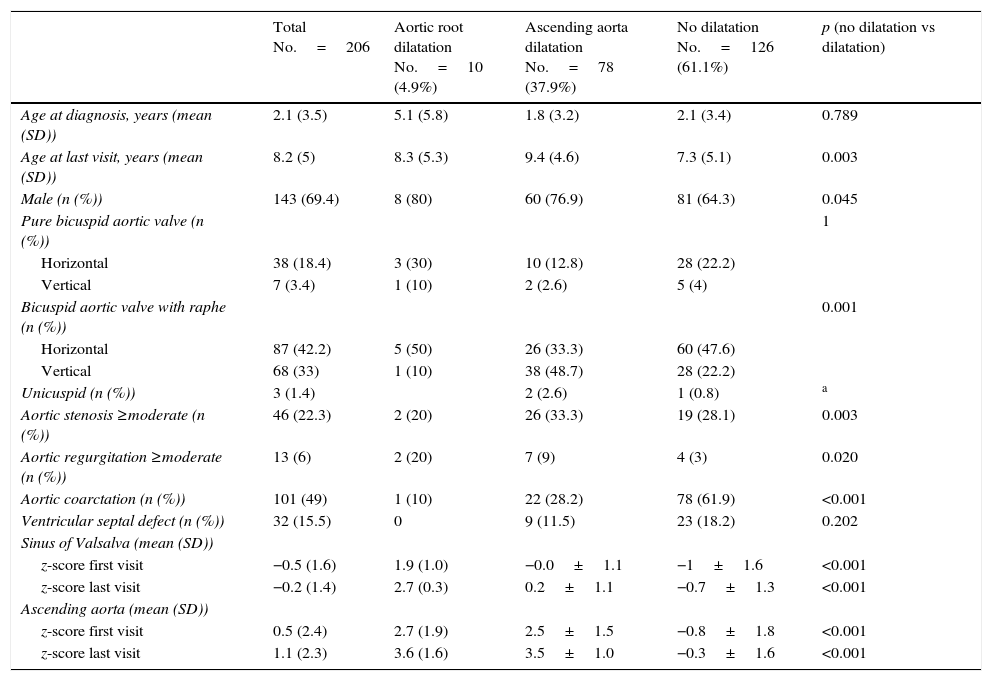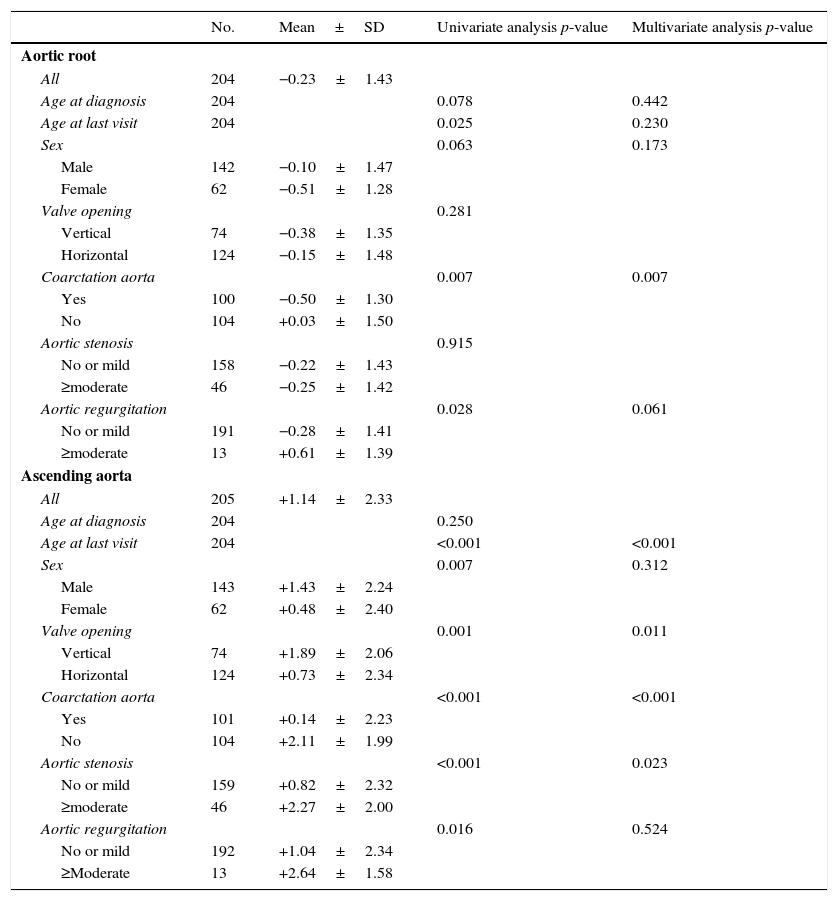Dilatation of the ascending aorta associated with bicuspid aortic valve is a major cause of morbidity and mortality in adults. The main objective was to recognize the aortic involvement in children, its characteristics and risk factors.
MethodsAortic measures of all pediatric patients with bicuspid aortic valve followed in a tertiary pediatric hospital between 1997 and 2015 were retrospectively taken. Patients with syndromes associated with aortic dilatation were excluded (n=17).
ResultsTwo hundred and six patients were included, 67.9% males. The commonest opening pattern was horizontal: 137 (66.7%). Half of the patients (101) had a history of surgical aortic coarctation, 46 (22.3%) had ≥moderate aortic valve stenosis and 13 (6%) had ≥moderate aortic insufficiency. Mean follow-up time was 6.1 (4.9) years; diagnosis of aortic dilatation was made during the first year of follow-up. Progression of the dilatation of the ascending aorta was noted in 17.1%, and of the aortic root in 2.5%. More than one-third (80/206) had aortic dilatation (z-score>2). The ascending aorta was exclusively affected in 70/80 patients, with sparing of the aortic root. In the multivariate analysis, patients with dilatation of the ascending aorta were associated with absence of coarctation (p=0.001) and vertical opening pattern (p=0.007).
ConclusionsPediatric patients with bicuspid aortic valve warrant medical follow-up for the frequent association with valve impairment and/or dilatation of the ascending aorta.
La dilatación de la aorta ascendente asociada a válvula aórtica bicúspide es una causa mayor de morbimortalidad en adultos. El objetivo principal fue reconocer la afectación aórtica en niños, así como sus características y factores de riesgo.
MétodosSe realizaron retrospectivamente las mediciones aórticas de todos los pacientes pediátricos con válvula aórtica bicúspide seguidos en un hospital pediátrico terciario entre 1997 y 2015. Se excluyeron los pacientes con síndromes asociados a dilatación aórtica (n=17).
ResultadosSe incluyeron 206 pacientes, de los cuales el 67,9% eran varones. El patrón de apertura más común fue horizontal: 137 (66,7%). La mitad de los pacientes (101) tenía historia de coartación aórtica, 46 de ellos (22,3%) con estenosis aórtica≥moderada y 13 (6%) con insuficiencia aórtica≥moderada. El seguimiento medio fue de 6,1 (4,9) años; el diagnóstico de dilatación aórtica se realizó durante el primer año de seguimiento. La progresión de la dilatación de la aorta ascendente se documentó en el 17,1%, y en el 2,5% en la raíz aórtica. Más de un tercio (80/206) presentó dilatación aórtica (z-score>2). La afectación exclusiva de la aorta ascendente se produjo en 70/80 pacientes, con preservación de la raíz aórtica. En el análisis multivariado, los pacientes con dilatación de la aorta ascendente se asociaron a ausencia de coartación (p=0,001) y patrón de apertura vertical (p=0,007).
ConclusionesEstá justificado el seguimiento en los pacientes pediátricos con válvula aórtica bicúspide debido a la frecuente asociación con disfunción valvular y/o dilatación aórtica.
Artículo
Comprando el artículo el PDF del mismo podrá ser descargado
Precio 19,34 €
Comprar ahora











